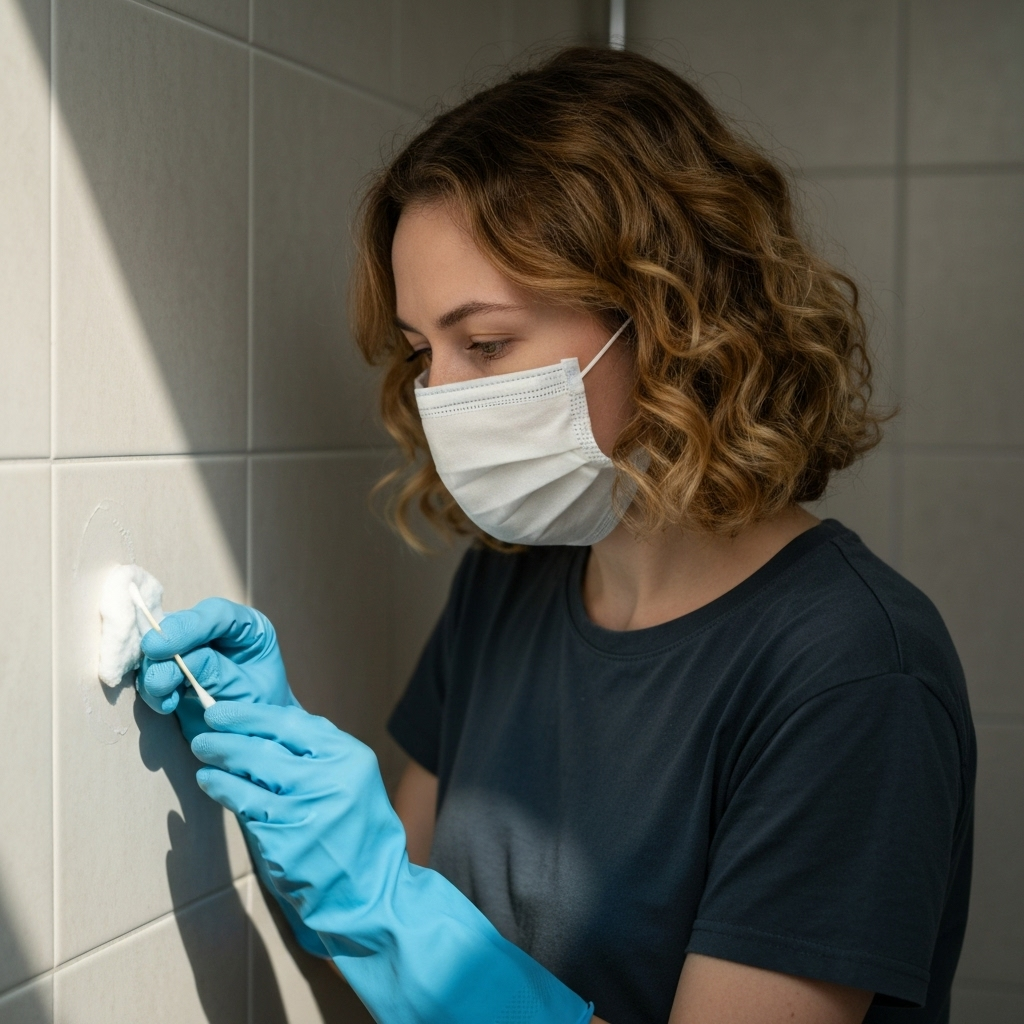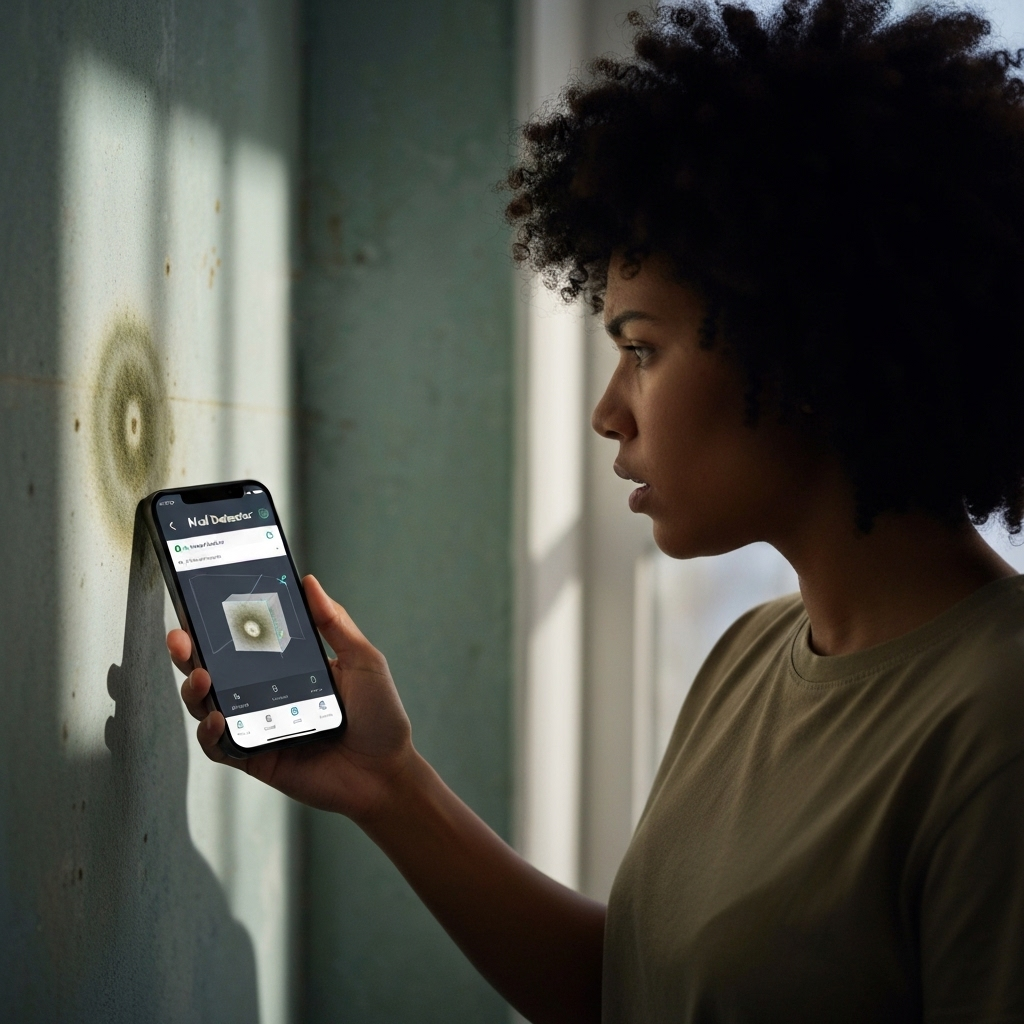Identification
Is It Mold or Dirt? A Homeowner's Guide to Telling the Difference
Is that spot on your wall harmless dirt or concerning mold? Our guide helps you tell the difference with visual cues, simple tests, and expert tips.
Fast facts
- Mold often appears fuzzy, slimy, or in clusters, while dirt is typically a flat smudge.
- Location is a key clue: Mold thrives in damp areas like bathrooms and basements.
- A musty, earthy odor is a strong indicator of mold, whereas dirt is usually odorless.
- Perform a simple, safe wipe test with detergent to see how the substance reacts.
- For large areas (>10 sq ft) or recurring spots, it's best to call a professional.
Photo examples




Is That Dark Spot on Your Wall Mold or Just Dirt?
It’s a moment every homeowner dreads. You’re cleaning, decorating, or just walking by a corner of your home when you spot it: a dark, unsightly blemish on the wall, ceiling, or windowsill. The first thought that flashes through your mind is often, “Is that mold?”
Panic can set in quickly. We all know mold can be a serious issue, impacting both your home’s integrity and your family’s health. But before you jump to conclusions, it's important to know that not every mysterious spot is a toxic invader. Sometimes, it’s just plain old dirt.
So, how can you tell the difference? As experts in mold identification, we're here to walk you through a practical, step-by-step process to investigate that mystery spot. This guide will help you distinguish between common household dirt and a potential mold problem, so you can take the right next steps.
First Glance: Quick Visual Cues
Your eyes are your first and best tool. The appearance of a spot can offer immediate clues. While a visual check isn't a definitive diagnosis, it’s an excellent starting point.
What Mold Typically Looks Like:
- Texture: Mold often has a distinct texture. It can appear fuzzy, velvety, slimy, or even cottony. It is three-dimensional and grows outwards from the surface.
- Pattern: It usually grows in irregular patches or circular clusters. You might see spots of varying sizes grouped together.
- Color: While "black mold" gets all the attention, mold comes in a wide array of colors, including green, white, gray, blue, orange, or a combination. The color can sometimes hint at the type of mold and the surface it's growing on.
What Dirt Typically Looks Like:
- Texture: Dirt, dust, and grime are almost always flat. They look like a smudge, stain, or a thin film resting on the surface.
- Pattern: Dirt stains are often more uniform or appear as streaks, especially if caused by water drips carrying dust down a wall. You might also find it settled evenly along baseboards or in corners.
- Color: Dirt is typically brown, gray, or black. It lacks the vibrant or varied hues that some mold colonies can have.
Consider the Location: Context is Everything
Where you find the spot is one of the most significant clues. Mold isn't random; it has specific needs. Its primary need is moisture.
Common Mold Hotspots are almost always associated with water, humidity, or condensation:
- Around shower tiles and on bathroom ceilings
- Under sinks with a slow leak
- In damp basements or crawl spaces
- Near leaky window frames or door sills
- On walls where plumbing pipes are located
- In poorly ventilated laundry rooms or attics
If the spot is in a consistently dry, well-ventilated area with no history of water issues, the likelihood of it being mold decreases significantly. On the other hand, dirt and dust accumulate based on airflow and traffic. You'll often find them in places like:
- Along high-traffic hallways and on baseboards
- Near air vents where dust is blown out
- Behind furniture where air is stagnant and dust settles
- On walls where hands frequently touch
Simply put, if the spot is in a damp area, your mold suspicion should be higher. If it’s in a dry, dusty area, it’s more likely to be dirt.
The Smell Test: A Telltale Sign
Your nose can also be a powerful detector. Mold produces microbial volatile organic compounds (MVOCs) as it grows, which create a very distinct odor.
Bring your nose somewhat close to the area (but not close enough to inhale spores directly) and take a gentle sniff. If you detect a musty, damp, or earthy smell—often described as smelling like wet socks, rotting leaves, or damp soil—you’re very likely dealing with mold or mildew.
Dirt, on the other hand, is typically odorless. At most, it might have a faint dusty smell. It will not have that pervasive, musty signature of active mold growth.
A Quick Safety Note: If you already feel unwell or have known respiratory issues or mold allergies, skip this step. Do not intentionally try to smell something you strongly suspect is mold.
The Cleaning Solution Test: A Simple Way to Investigate
If you're still unsure, you can perform a simple test with a common household cleaner. This can help reveal the nature of the substance.
Safety First!
Before you touch the spot, protect yourself. Wear rubber gloves, safety goggles, and a face mask (an N95 respirator is ideal) to avoid skin contact and inhalation of potential spores.
How to Perform the Test:
- Mix a solution of one part household detergent and ten parts water. Avoid using bleach for this test, as it can discolor surfaces and may not kill the mold's roots.
- Dip a cotton swab or the corner of a clean, white cloth into the solution.
- Gently dab and wipe a small part of the spot.
Analyzing the Results:
- If it's dirt, dust, or grime: It should wipe away relatively easily. The cloth will be soiled, but the surface underneath will likely be clean or only lightly stained.
- If it's mold: It will often smear or smudge. While some of it may come off, a stain is often left behind. This is because mold grows its “roots” (mycelia) into porous materials like drywall or wood. Sometimes, the spot may seem to lighten but reappear quickly, which is a classic sign of mold.
Still Unsure? Let Technology Give You a Second Opinion
Differentiating between stubborn dirt stains and mold can be tricky, even with these tests. Water stains, for example, can look like flat mold and are often found in the same damp places. So what do you do when the evidence is inconclusive?
That’s where modern tools like Mold Detector AI come in. Instead of guessing and worrying, you can get a fast, data-driven analysis right from your phone. Our AI has been trained on thousands of images of both mold and things that look like mold (like dirt and water stains). By analyzing the texture, pattern, and other visual data in your photo, it provides an instant probability of whether that mystery spot is mold.
Not sure if that's mold? Upload your photo to Mold Detector AI and get instant results.
Knowing When to Call a Professional
DIY testing and tools like ours are fantastic for small, isolated spots. However, some situations require an expert. It's time to call a certified mold remediation professional if:
- The affected area is larger than 10 square feet (about a 3x3 foot patch). This is the general guideline from the EPA for a job too big for a homeowner.
- You smell a strong, musty odor but cannot find the source. This could indicate a large, hidden mold colony behind a wall, under flooring, or in your HVAC system.
- The mold problem returns quickly after cleaning, indicating the underlying moisture issue hasn't been resolved.
- The contamination is the result of major water damage, such as flooding or a burst pipe.
- A member of your household is experiencing unexplained allergy symptoms, asthma attacks, or other respiratory issues that could be related to the health risks associated with mold.
Stay Vigilant, Not Worried
Figuring out if you have mold or dirt doesn't have to be a source of anxiety. By carefully observing the visual cues, considering the location, and performing a simple, safe test, you can make an educated guess. And for those tricky spots, technology is here to help you get a clearer answer.
Remember, the ultimate defense against mold is moisture control. Whether it’s dirt or mold, a damp spot on your wall means you need to find and deal with a moisture problem. By staying vigilant and addressing leaks and humidity promptly, you can keep your home healthy, safe, and free from both dirt and mold.
Ready to put this into action?
Not sure if that's mold? Upload your photo to Mold Detector AI and get instant results.
Launch Mold Detector AI